 Mike Self
.
September 20, 2023
.
C10 Builders Guide
Mike Self
.
September 20, 2023
.
C10 Builders Guide
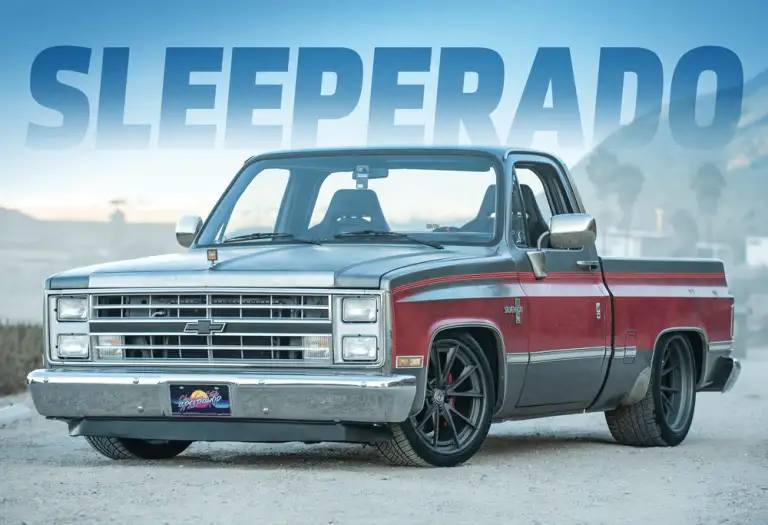
Shop trucks can be a slippery slope for automotive-related business owners. On the one hand, they only need to be able to haul parts around, so just about anything with a decent amount of cargo space will do. Oftentimes, the cheapest running truck you can find makes the most sense.
These days, though, you can kind of have it all. Take Noah Alexander’s ’86 Chevy Silverado, for instance. It may look like a stocker with a basic drop and wheels, but it’s actually so much more than that. In fact, it’s basically a new truck underneath!


On the other end of the spectrum, some folks opt to buy a new truck for maximum comfort and reliability. Traveling around town to pick up parts can mean lots of wear and tear, which makes a factory warranty an attractive option! Add to that the plethora of aftermarket parts available for most popular new trucks these days, and you can have a sweet-looking parts-getter in a short amount of time while enjoying some peace of mind.
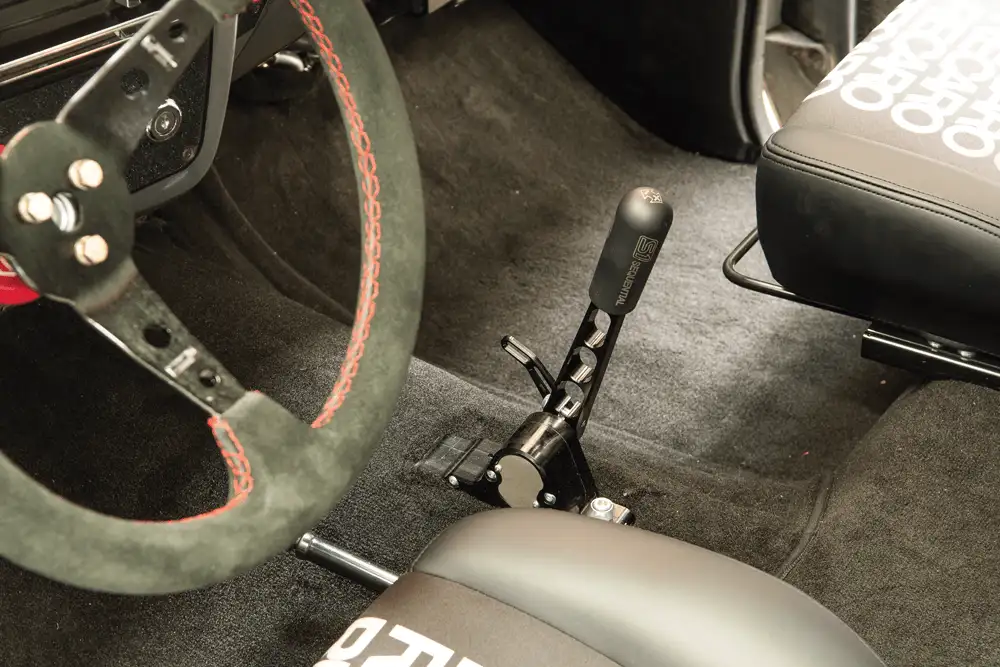

“Sure, the exterior could keep its patina since it’s still what all the cool kids are doing these days, but the rest of the truck would be a showcase of everything Noah’s crew at Classic Car Studio is capable of.”
As owner of Classic Car Studio in St. Louis, which builds and sells vintage steel, Noah has a certain image to uphold, so keeping things basic just wasn’t an option when it came time to build his shop truck. Sure, the exterior could keep its patina since it’s still what all the cool kids are doing these days, but the rest of the truck would be a showcase of everything Noah’s crew at Classic Car Studio is capable of.
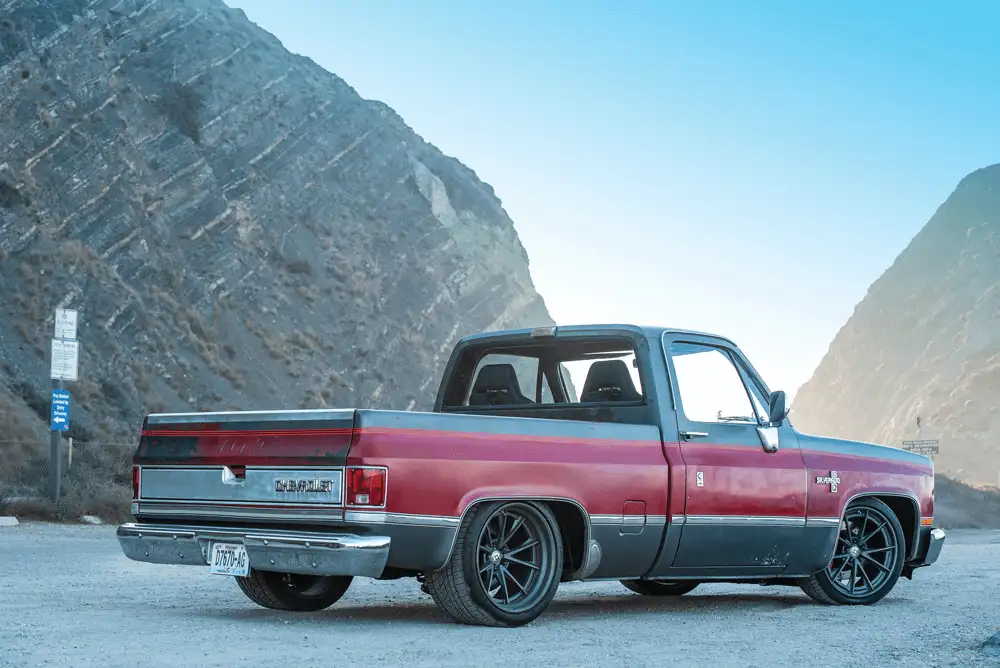

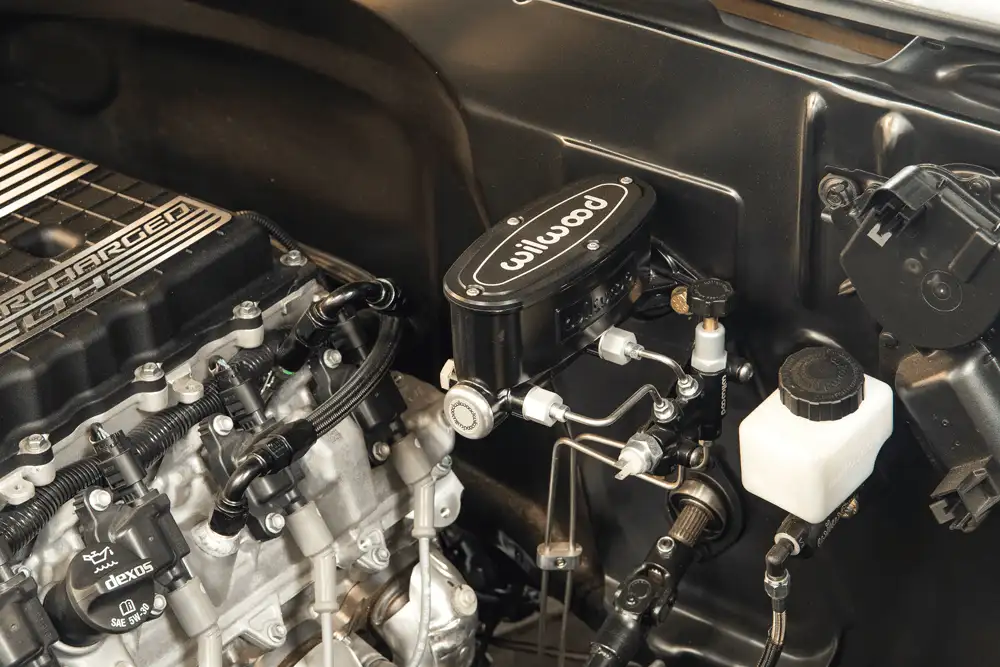
One of the first things to go was the tired 305 small block and 700R4 transmission. It’s not that they couldn’t be rebuilt and reused, but they definitely weren’t the most exciting options on the table. After some consideration, Noah came up with a combination that would guarantee that his square body would end up at the top of the shop truck heap — a brand new supercharged GM LT4 mated to a T-56 Super Magnum six-speed gearbox with an S1 sequential shifter. In stock form, the engine puts out an effortless 640-horsepower and 630 ft-lbs of torque, which may qualify Noah’s Silverado as one of the quickest shop trucks around!
“…Noah is logging plenty of miles on it. In fact, he brought it all the way from St. Louis to Los Angeles to get it in front of our cameras. How’s that for a well-built shop truck?”
But all that speed wasn’t going to do Noah any good if the truck couldn’t stick to the ground or stop at a millisecond’s notice. To give the truck a proper foundation on which to build a proper suspension, a GSI chassis brace was welded in between the framerails to stiffen everything up. A complete RideTech coilover system, which included a 4-link, tubular control arms, sway bars, and drop spindles was also installed to dramatically improve the truck’s handling characteristics and stance, with gargantuan Wilwood brakes at every corner for massive stopping power. To top it off, the entire chassis was freshly painted to eliminate any notion that this was just some basic “stop, drop, and roll” build. And speaking of “roll,” the C-10 now wears 20×10 and 20×12 inch HRE wheels with 275/35 and 315/35ZR20 Continental rubber for maximum grip.


Since Noah planned on spending a bunch of time behind the wheel, a pair of leather and suede Recaro buckets was installed for comfort, Dakota Digital gauges were placed in the instrument cluster for up-to-the-second updates and a Kicker sound system was dropped in for maximum smiles per mile. Noah also wanted to keep himself and any passengers safe, so a roll bar was also fabricated and installed.

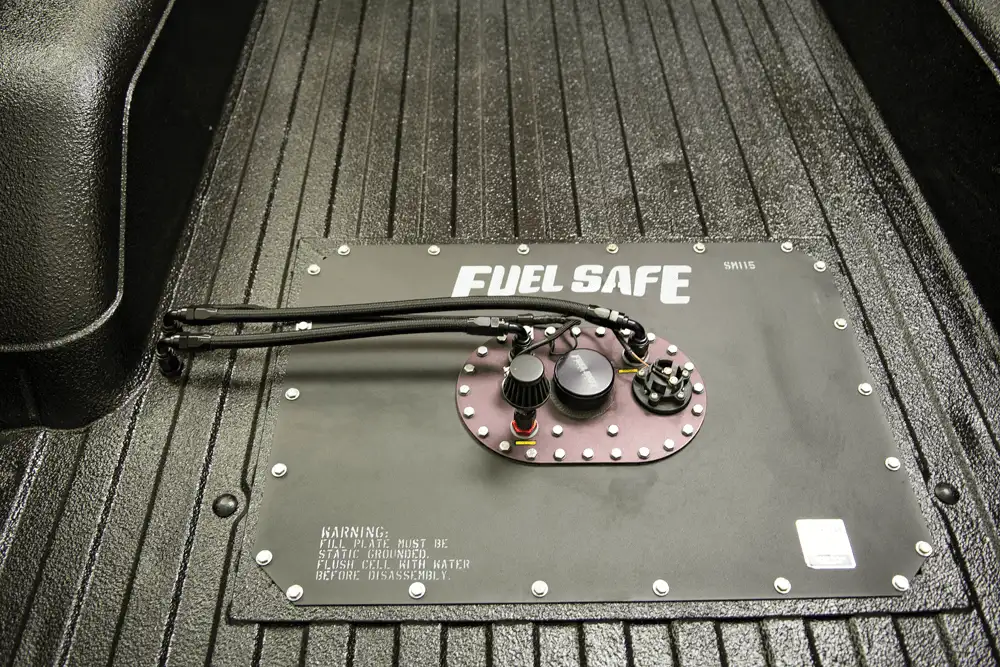
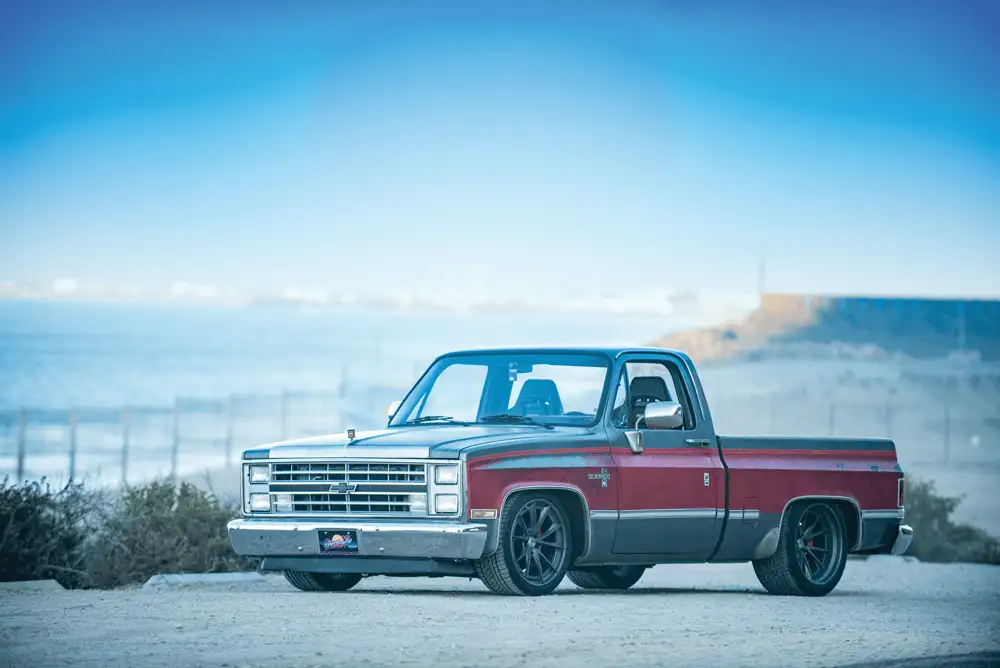
And you wanna know the craziest part about this shop truck build? It only took a month! Granted, lots of early mornings and late nights were involved, but that’s an amazing timeline for the amount of work that went into this thing! Now that the truck is done — yes, the original paint and body were just too rad to touch — Noah is logging plenty of miles on it. In fact, he brought it all the way from St. Louis to Los Angeles to get it in front of our cameras. How’s that for a well-built shop truck?
What are the different engine options and their conditions for the 1986 Chevrolet C10 1/2 Ton 2dr Pickup?
The 1986 Chevrolet C10 1/2 Ton 2dr Pickup is available with two main engine options, each with distinct characteristics and value points. Below are the details:
A vehicle in #3 condition is considered “Good.” It is a drivable vehicle that shows some wear but maintains a solid, presentable charm. These cars may have an older restoration or a well-maintained original that requires some work to be in top form.
By providing different engine options, you can tailor your 1986 Chevrolet C10 to either prefer the power of a gasoline engine or the efficiency of a diesel engine, each of which maintains good operational status.
In summary, the 1986 Chevrolet C10 1/2 Ton 2dr Pickup offers versatility with:
Choose the option that best aligns with your driving preferences and valuation expectations.
What are some current bids for the 1986 Chevrolet C10 1/2 Ton 2dr Pickup in various locations?
If you’re in the market for a 1986 Chevrolet C10 1/2 Ton 2dr Pickup, here are some current bids from various locations:
With varying prices and multiple locations to choose from, there’s definitely a deal waiting that suits your budget and preference.
What were the different military specification models produced from 1983-1986 based on the Chevrolet C/K Series Pickup?
Between 1983 and 1986, several military specification models were developed based on the Chevrolet C/K Series Pickup. These models included:
What were the different trim lines available for the Chevrolet C/K Series Pickup in the 1970s and 1980s?
The Chevrolet C/K Series Pickup went through several changes in its trim lines during the 1970s and 1980s. Here’s a breakdown of the different options available during these decades:
Throughout the 1970s and 1980s, the Chevrolet C/K Series Pickup featured a range of trim lines that evolved over time. These included:
These updates ensured that buyers had various options, ranging from basic to luxurious, to suit their preferences and needs.
What changes occurred in the series designators for the Chevrolet C/K Series Pickup in the final year of production?
In the 1987 model year, significant changes were made to the series designators of the Chevrolet C/K Series Pickup. Here’s a breakdown:
These alterations were introduced to facilitate the introduction of newly designed C and K models, which began production early in 1987.
What changes occurred in the front-end design of the Chevrolet C/K trucks in 1980 and 1981?
In 1980, the Chevrolet C/K trucks underwent notable front-end design changes. The most significant update was a flatter front grille paired with square headlights, giving the truck a more modern and streamlined appearance. This design choice was exclusive to 1980, making it distinctive for that model year.
Moving into 1981, the C/K trucks featured an all-new front end that simplified and refined the previous year’s design. Key changes included an updated front clip, a redesigned hood, and a single-plane grille. These updates not only modernized the truck’s look but also set the standard for the rest of the production run in subsequent years.
In summary, the 1980 model year introduced a flatter grille and square headlights, serving as a transitional design. In contrast, the 1981 model fine-tuned these elements with a simpler, more cohesive aesthetic.
What are the key design features of the third generation C/K trucks introduced in 1973?
The third generation C/K trucks, launched in 1973, underwent a comprehensive redesign, making them a significant model in automotive history. Here are the standout design elements:
The third generation C/K trucks’ mix of functional design improvements and evolving trim options contributed to their longevity and popularity.
When was the fourth generation of the Chevrolet C/K introduced and how long did it continue in production?
The fourth generation of the Chevrolet C/K pickup truck was introduced in 1988. This generation remained in production until 2002, offering a variety of models and improvements during its 14-year run.
What was the significance of the 6.2-liter diesel engine introduced in 1982?
In 1982, the launch of the 6.2-liter diesel engine marked a significant evolution in the automotive industry. This engine not only replaced an older diesel model but also brought substantial enhancements in performance and reliability.
Overall, the 6.2-liter diesel engine introduced in 1982 played a pivotal role in advancing engine technology, securing significant contracts, and broadening the application scope of diesel-powered vehicles.
What are the different condition ratings available for the 1986 Chevrolet C10 1/2 Ton 2dr Pickup?
When evaluating a 1986 Chevrolet C10 1/2 Ton 2dr Pickup, you’ll come across several condition ratings that help determine its value and overall quality. Here’s a breakdown of the different condition ratings:
Understanding these condition ratings is crucial for assessing the value and quality of a 1986 Chevrolet C10 1/2 Ton 2dr Pickup, whether you’re buying, selling, or simply valuing a classic truck.
What is the engine specification of the 1986 Chevrolet C10 1/2 Ton 2dr Pickup?
After some consideration, Noah came up with a combination that would guarantee that his square body would end up at the top of the shop truck heap — a brand new supercharged GM LT4 mated to a T-56 Super Magnum six-speed gearbox with an S1 sequential shifter. In stock form, the engine puts out an effortless 640-horsepower and 630 ft-lbs of torque, which may qualify Noah’s Silverado as one of the quickest shop trucks around!
But to fully appreciate Noah’s modern marvel, let’s take a step back and consider the original engine specifications of the 1986 Chevrolet C10 1/2 Ton 2dr Pickup. The stock engine was a 6-cylinder with a displacement of 262 cubic inches, delivering 140 horsepower through a 4-barrel (4bbl) carburetor and featuring an overhead valve (OHV)configuration.
This juxtaposition highlights the incredible evolution from the dependable stock engine of the ’86 model to Noah’s high-performance, supercharged setup. Each component in Noah’s build is meticulously chosen to push the boundaries of what a shop truck can achieve, setting a new benchmark in both performance and innovation.
What is the valve configuration of the engine?
The engine has an overhead valve configuration.
What type of carburetor does the engine use?
The engine uses a 4-barrel carburetor.
What is the engine’s horsepower?
The engine produces 140 horsepower.
What is the engine displacement?
The engine displacement is 262 cubic inches.
What is the engine type?
The engine is a 6-cylinder.
Share Link